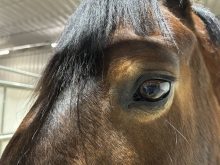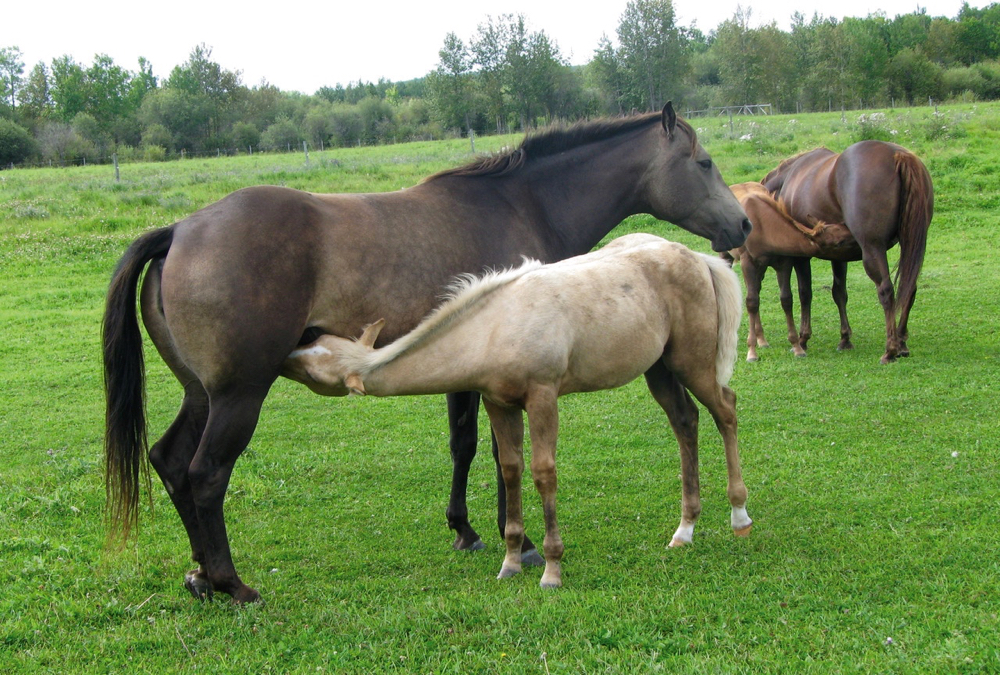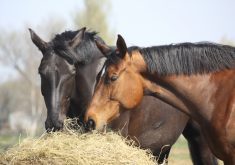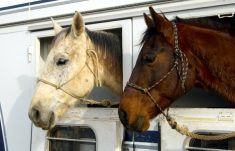The American Quarter Horse Association has recognized the presence of five genetic disorders in the quarter-horse breed. These disorders can also affect horses of quarter-horse ancestry. The effects of genetic disorders range from mild and manageable to severe and terminal. Understanding the prevalence and expression of these genetic disorders better equips quarter-horse owners to make informed decisions with regard to breeding.
The popularity of select sires coupled with assisted reproductive technologies such as shipped, cooled, and frozen semen, creates an environment whereby expression of unfavourable genetic defects becomes increasingly possible. Correction relies on conscious decisions from educated horse owners and breeders who recognize the warning signs. Passing these disorders on to successive generations causes unnecessary suffering and financial losses.
Read Also
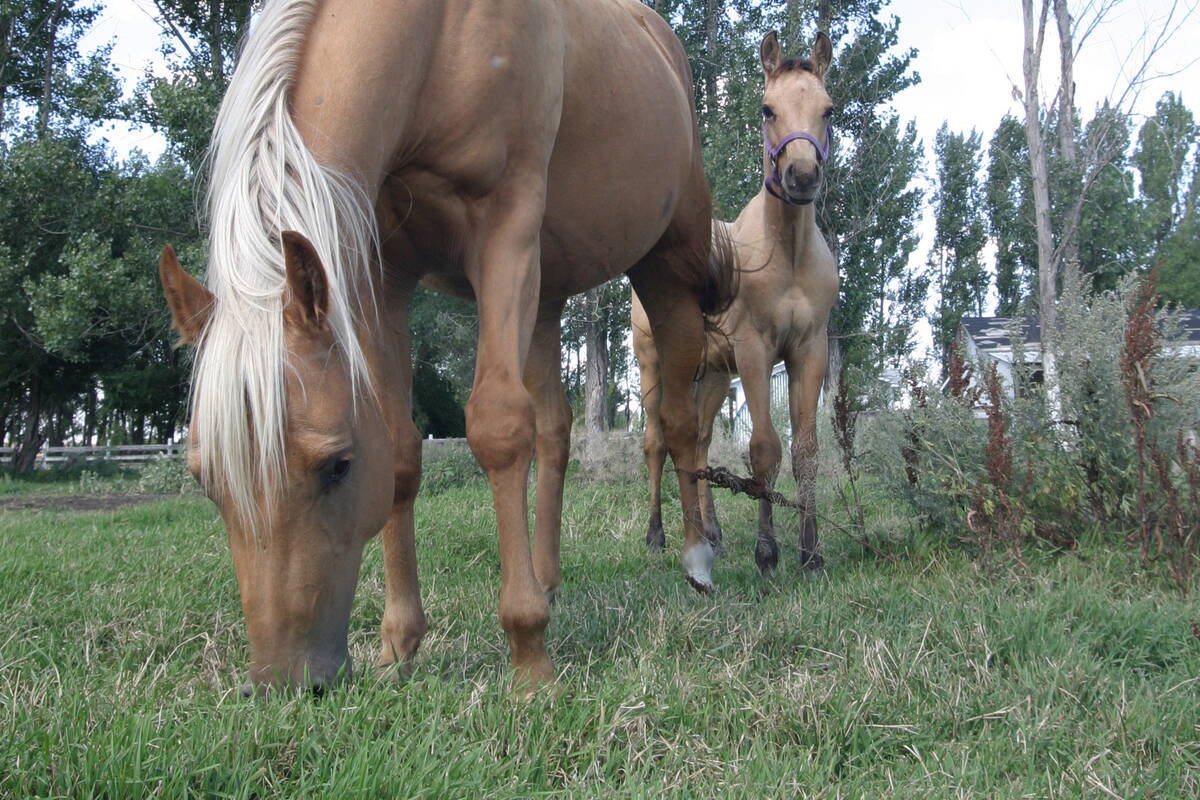
Ignoring growth plates sabotages young horse development
Young horse training plans and workloads must match their skeletal development. Failing to plan around growth plates can create lifelong physical problems.
Hyperkalemic periodic paralysis (HYPP) is a hereditary disease of the muscle. The defective gene ineffectively codes the sodium-potassium channels in muscle cell membranes. The contraction of muscle fibres is controlled through these channels. Muscle cells with the defective channel “leak,” causing the muscle fibres to become hyper-excitable, easily and involuntarily contracting.
The repeated contractions cause the muscles to become large and prominent. This muscular appearance is highly sought after in the quarter-horse halter shows and breeders have selected for this trait, and so, inadvertently, the disease. The disorder causes sudden, unexplained muscle twitches, cramping, profound muscle weakness and in severe case an attack which may progress to collapse and death. The genetic mutation can be traced back to Impressive, a halter horse stud from the 1970s and ’80s. HYPP is caused by a dominant gene and a single copy of the gene can cause the disease. Horses with two copies of the diseased gene appear to be even more severely affected. Careful nutritional management and exercise programs can help to alleviate the clinical expression of HYPP in many affected horses.
Hereditary equine regional dermal asthenia (HERDA) is an inherited degenerative skin disease. Horses that have HERDA are born with a defect in the structure and function of collagen, a tensile component that makes up tissues such as skin, muscles, and cartilage. Affected horses have fragile hyper-extensible skin, which is easily injured, heals ineffectively and rarely heals without a disfiguring scar.
Foals appear normal at birth but by the age of 1.5 years they begin to develop skin lesions. Wearing a saddle often causes the horse’s skin to tear away from the underlying muscles, leaving disfiguring wounds and scars. Sunburn can also be a concern.
There is no cure for the disorder and most horses with HERDA are euthanized before four years of age for humane reasons. Many carriers and affected horses can be traced back to the foundation quarter-horse sire, Poco Bueno. The disease is recessive, which means that a horse must have two copies of the defective gene to suffer from the disease. Consequently both the sire and the dam must possess at least one copy of the gene in order for the offspring to be afflicted.
Glycogen branching enzyme deficiency (GBED) is a simple hereditary recessive lethal condition. Foals affected with the disorder are missing the enzyme that turns glucose into glycogen, a major fuel. No fuel, no foal; GBED is always fatal. Many affected foals are miscarried or stillborn. Those born alive do not survive beyond three months of age. The disease occurs in foals that are homozygous for the lethal GBED allele meaning both parents carry one copy of the gene. The stallion King P-234 has been linked to this disease.
Polysaccharide storage myopathy (PSSM) is a hereditary autosomal dominant genetic disease caused by a defect in the gene related to glycogen storage in muscle. Denied access to their fuel source, muscles struggle to function properly.
Affected horses may show muscle stiffness, cramping, tying up, and/or gait abnormalities that may be mild to severe. In some cases horses with PSSM are unable to exercise normally because of weakness, pain, and reluctance to move. Horses with PSSM have a predisposition to muscle soreness and require long-term management of their condition. Clinical expression depends on turnout, pasture, diet, and exercise regimens.
Malignant hyperthermia (MH) is an inherited autosomal dominant disorder that causes a life-threatening condition. It is triggered by exposure to certain drugs used for general anesthesia, overwork or stress. In susceptible horses, a specific trigger induces excessive body temperature, muscle rigour, metabolic acidosis and death. It is important to know the status of a horse prior to surgery or before initiating a new training regime.
Genes come in pairs. Each parent contributes one copy to the offspring. With autosomal dominant genetic diseases such as HYPP, PSSM, and MH only one defective gene is necessary to express the genetic disease.
For the autosomal recessive genetic diseases such as GBED and HERDA typically two copies — a pair of an abnormal gene must be present in order for the horse to show expression of the genetic defect. Offspring born with one copy of the defective gene and one non-defective gene are considered “carriers.” Carriers have a 50 per cent chance of passing on the defective gene. Genetic testing of quarter-horses is critical in breeding management, as it is the only way to know whether a certain horse is a carrier for these specific diseases.




